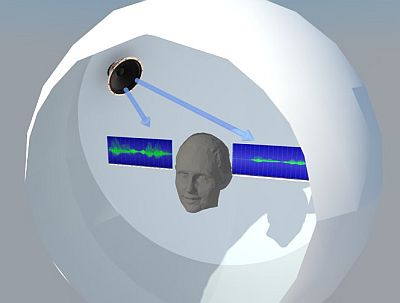|
|
Echolocation is a vital tool observed in several mammal species.
Barn Owls
Bats
Humans demonstrate similar abilities innately and readily without any training.
Interaural Time Difference (ITD) and Interaural Frequency Difference (IFD) are shown to be exploited routinely by the human auditory system
in target location, source discrimination and speech processing. These properties have given rise to a number of interesting phenomenon.
Virtual Ripples (Nassiri R., Escabi MA.)
Auditory localization (Brungart, DS. Rabinowitz, WM.)
Comparatively weak ability to echolocate is also innately present in humans. For example, an average adult could effortlessly tell the
difference between a large empty room and a small one just by listening to the way steps sound within each enclosure. |
 |
However, strong but rare echolocation abilities are recorded for several individuals.
Ben Underwood
Daniel Kish
We must note that these individual manifestations have been achieved with no rigorous training or research by the efficacy of methods.
Recently, there has been an elevated interest in human echolocation as the target of formal scientific studies.
Milne, JL. Anello, M.
Kolarik, AJ. Cirstea, S.
CACS is in the research phase of a process that promises to be a practical and efficient method to teach echolocation
to visually challenged subjects.
|








